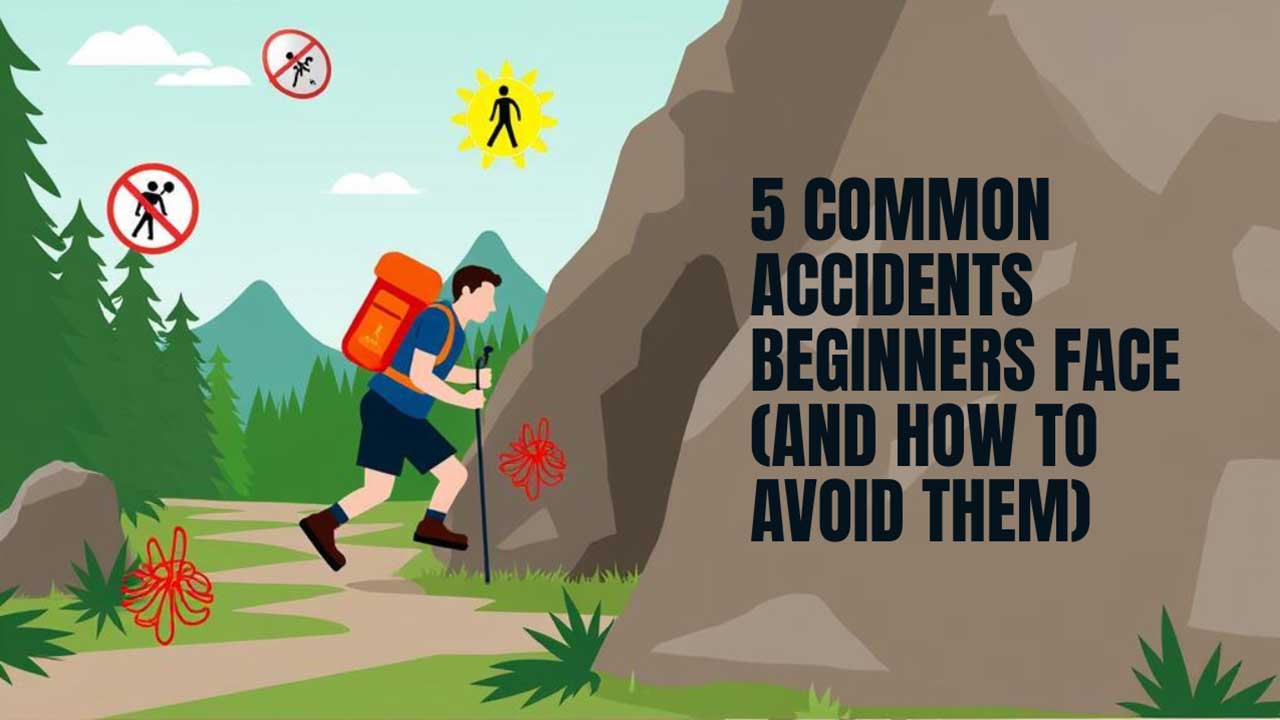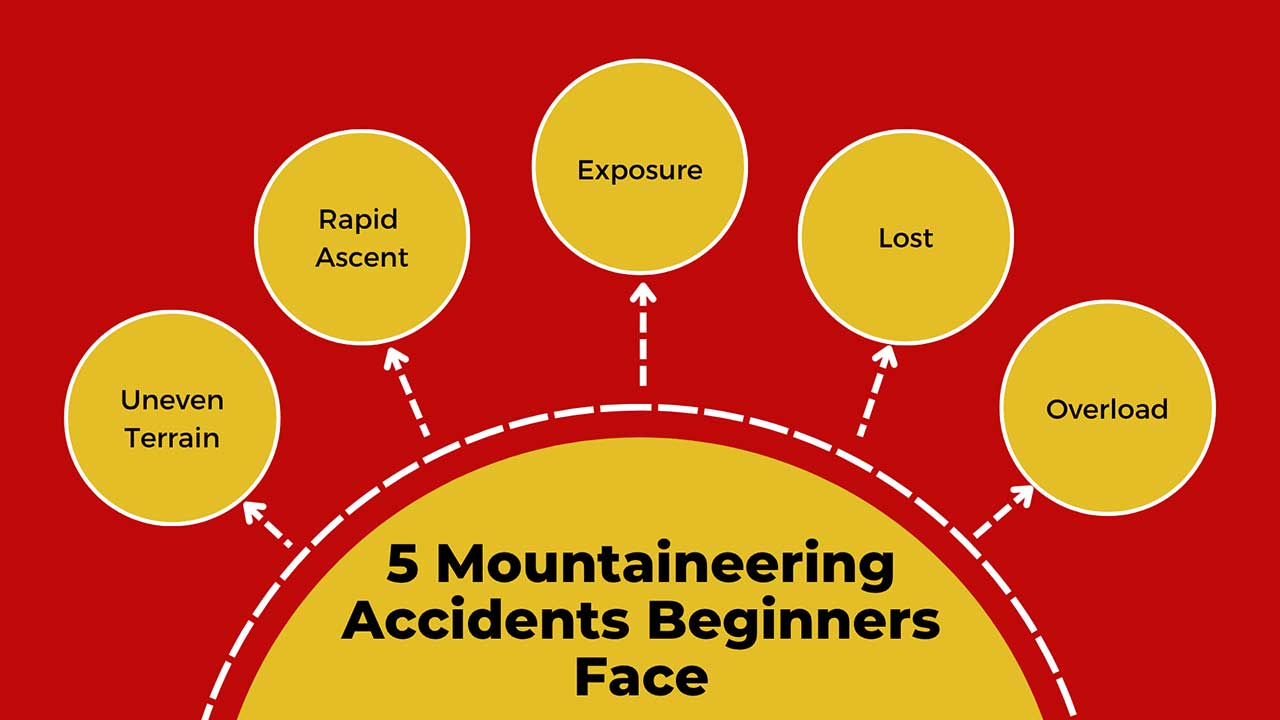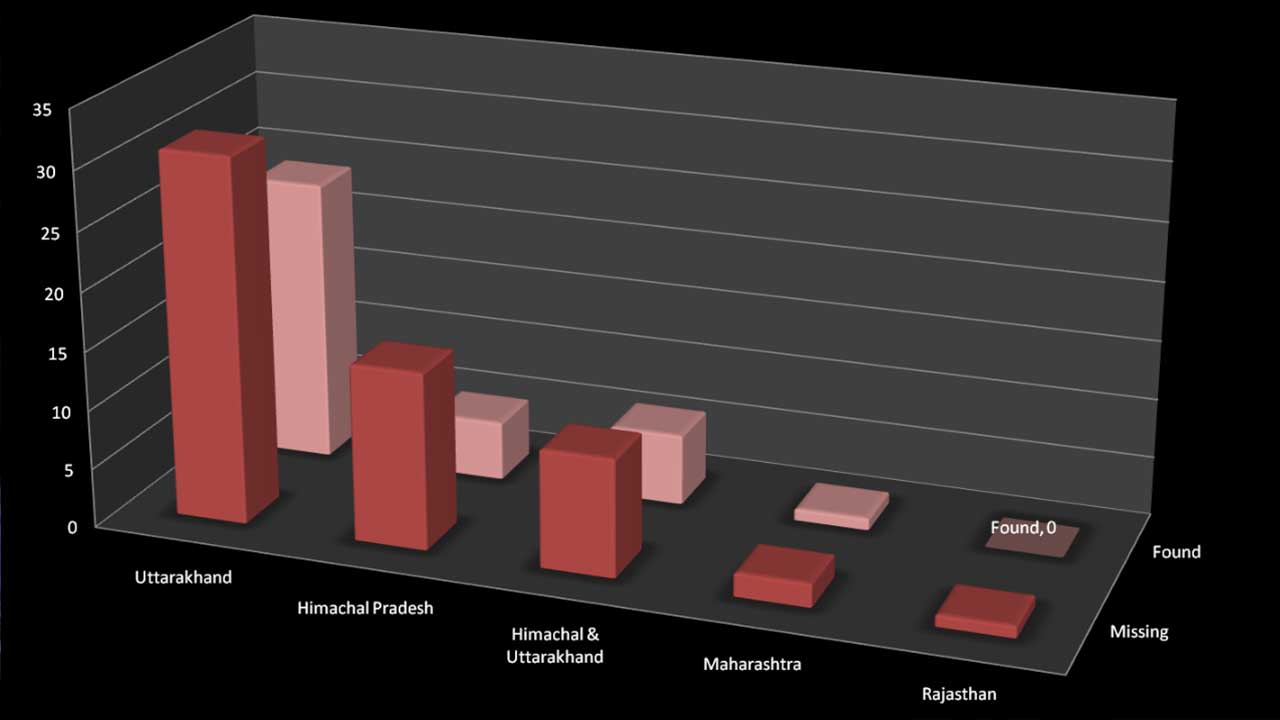5 Common Accidents Beginners Face (and How to Avoid Them)
Blogs
Stay Safe on Your First Himalayan Adventure
Mountaineering is a rewarding pursuit—but as any experienced climber will tell you, the mountains are not forgiving to ignorance. For beginner mountaineers and trekkers stepping into the high Himalayas, preparation can mean the difference between a successful summit and a serious accident.
At Ascent Descent Adventures, we’ve trained thousands of trekkers and mountaineers across the Pir Panjal and greater Himalayan ranges. Based on years of field experience, and according to our in depth research of adventure accidents that occurred in the five years (2018-2022). Here are the 5 most common accidents beginners face—and exactly how you can avoid them.
1. Slips and Falls on Uneven Terrain
The danger: Slipping on scree, snow, or wet rock is one of the most frequent causes of injury in the Himalayas. Even low-grade slopes can be risky if your footwork is unstable or your gear is inappropriate.
Why it happens:
- Wearing worn-out or incorrect footwear
- Inexperience with balance on shifting terrain
- Ignoring the importance of trekking poles or crampons when required
How to avoid it:
- Always wear high-ankle, grippy trekking boots with good sole support
- Use trekking poles to improve balance
- Join a Basic Mountaineering Course to learn terrain navigation and foot placement techniques

2. Altitude Sickness & Rapid Ascent
The danger: Acute Mountain Sickness (AMS) can lead to cerebral or pulmonary edema—both of which are life-threatening if left untreated.
Why it happens:
- Ascending too quickly without proper acclimatization
- Ignoring early symptoms like headache, fatigue, or insomnia
- Dehydration or overexertion
How to avoid it:
- Follow the “climb high, sleep low” rule
- Drink plenty of fluids and avoid alcohol or sleeping pills at altitude
- Learn early recognition of AMS symptoms during our High Altitude Survival Course
3. Hypothermia and Exposure
The danger: Cold, wet, and windy weather can strip your body of heat, especially when you’re tired. Hypothermia can impair your judgment and even lead to unconsciousness or death.
Why it happens:
- Wearing cotton or non-insulated layers that get wet
- Getting caught in bad weather without proper protection
- Not recognizing early signs like shivering, slurred speech, or confusion
How to avoid it:
- Dress in moisture-wicking layers: base (synthetic/wool), insulation (fleece/down), shell (waterproof/windproof)
- Always carry an emergency poncho and dry socks
- Pack smart using our Gear Checklist PDF
4. Getting Lost on the Trail
The danger: In poor visibility or unfamiliar terrain, a wrong turn can lead you off-route or into dangerous zones like crevasses, cliffs, or avalanche-prone slopes.
Why it happens:
- Inattention to trail markers or GPS
- Trekking without a guide
- Poor communication in group or solo wandering

How to avoid it:
- Always trek with a licensed local guide
- Attend Expedition Preparation Training to learn basic navigation and map reading
- Use digital tools (like Gaia GPS or ViewRanger) along with traditional compass navigation
5. Gear Malfunction or Overload
The danger: Broken buckles, snapped crampons, torn tents, or an overloaded rucksack can turn a normal hike into a crisis, especially if you’re far from base.
Why it happens:
- Using borrowed or untested gear
- Not knowing how to use safety equipment properly
- Carrying too much or unbalanced weight
How to avoid it:
- Learn the ABCs of gear during a structured course like our Mountain Skills Program
- Do full gear checks at every camp
- Use our Essential Gear List to stay light and safe
Final Thoughts: Accidents Are Avoidable—With the Right Training
No one is born mountain-ready. Accidents often occur not due to nature’s fury—but from lack of preparation. By understanding these common beginner mistakes, you take your first real step toward becoming a confident and responsible mountaineer.
At Ascent Descent Adventures, we don’t just guide you to summits—we train you to think like a mountaineer. Whether you’re planning your first trek, climbing a 6,000-meter peak, or preparing for an international expedition, our courses build skills for life.
Recommended Read: Mountaineering Safety
Recommended Read for Safety & Risk Awareness:
- 5 Red Flags to Watch for During Your First Expedition
- 5 Signs You Might Be Getting Altitude Sickness
- 5 Emergency Signals Every Mountaineer Should Know
- 5 Situations Where Turning Back is the Smartest Option